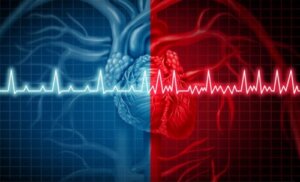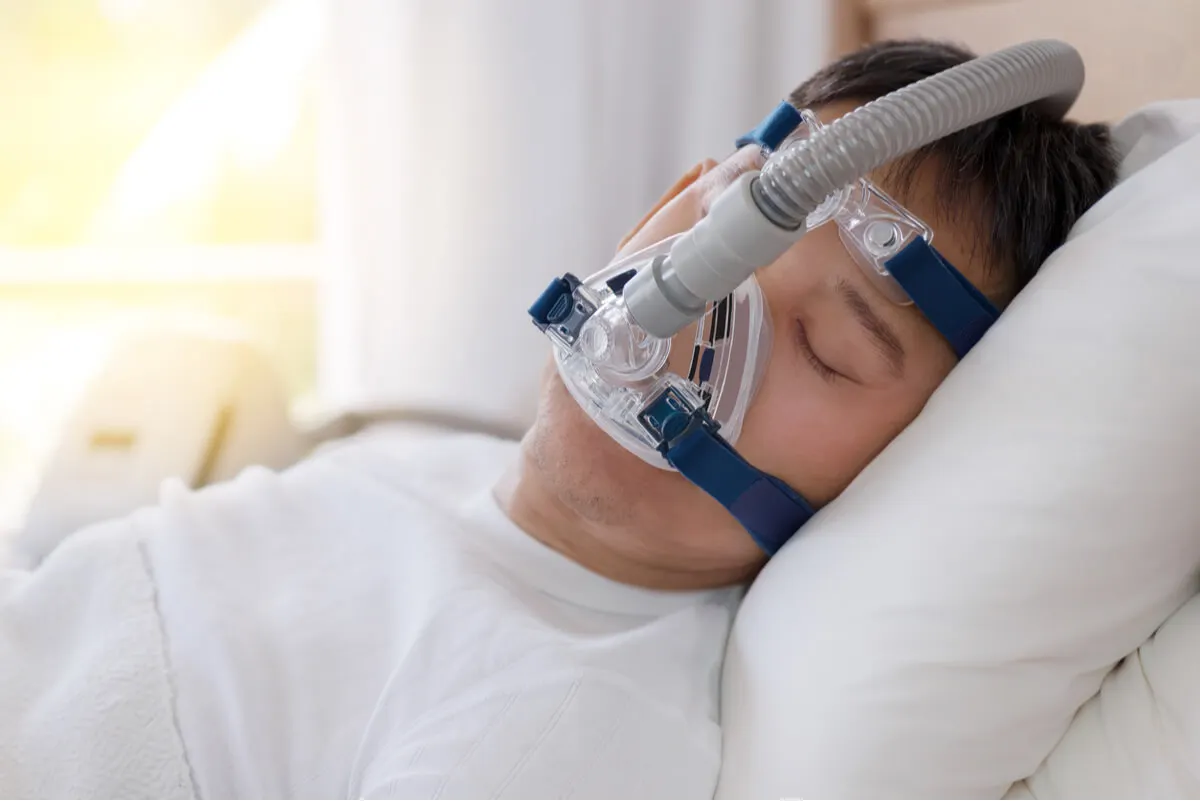8 Tips for Patients with Atrial Fibrillation

Atrial fibrillation (AFib) is a heart condition that affects the regularity of the heartbeat and needs some medical advice on how to live with it. It can be a chronic or persistent disease, although it’s sometimes of short duration.
The causes of A-fib are diverse, as are the symptoms that appear. These include the following:
- Rapid heartbeat
- Fatigue
- Respiratory difficulty
Treatment includes anticoagulants, beta-blockers, and calcium antagonists. In addition, some lifestyle changes and adjustments related to diet and physical activity are recommended.
What is atrial fibrillation and why does it occur?
The human heart beats between 60 and 100 times per minute, varying with activity. Now, regardless of the rate, the rhythm is usually very regular, that is, the interval between each beat lasts about the same.
However, when atrial fibrillation is present, the heart rhythm becomes out of step; it is altered. To put it more graphically, there may be three fast beats, one slow beat, then two fast beats, and so on.
It’s normal for there to be accelerations when we exercise, receive a fright or, conversely, for it to slow down while we sleep. However, in atrial fibrillation it doesn’t happen this way.
According to studies, 1 million people in a country such as Spain suffer from this condition. And, it’s estimated that in the United States there are at least 2.7 million who have it.
Sometimes the cause of A-fib is unknown. But other times it can be caused by one of the following:
- Impairment in the electrical functioning of the heart
- Complications after heart surgery
- Uncontrolled high blood pressure
- Coronary heart disease
You may also be interested in: Palpitations at Night: What You Should Know
Types, symptoms and complications
Atrial fibrillation originates in the upper part of the heart, in the chambers called the atria. There, multiple beat impulses are produced at the same time and in a disorganized manner. This results in an altered heart rate and makes it impossible for the heart to sustain the adequate blood flow to the whole body.
It can be paroxysmal, when the heart returns to its regular rhythm in an estimated period of one week after treatment or even without intervention. On the other hand, we also refer to persistent AFib when the irregularity is present for a longer period of time (it doesn’t go away on its own, but requires treatment).
If it’s present for more than 12 months, it’s said to be of long duration.
However, sometimes complications arise due to atrial fibrillation. Due to the lack of synchrony in the rhythm, there may not be a complete emptying of blood in the atria. This causes clots to form in the heart.
There could then be a problem if these clots break off and cause blockages in the arteries of the brain or other areas, leading to a stroke, peripheral arterial embolism and heart failure.

Read more here: Work Stress Associated with Risk of Heart Attack
Tips to follow for living with atrial fibrillation
For patients with atrial fibrillation, leading a normal life can seem challenging. However, it doesn’t have to be. With treatment, and some adjustments in habits, they can continue to carry out most of their daily activities.
Although it’s difficult to ensure that some complications won’t occur, the risks can be greatly reduced. Here are some tips for patients with atrial fibrillation that they should follow in order to have a better quality of life.
1. Respect the treatment
The first and most fundamental thing is to follow the recommendations given by the doctor. It’s appropriate to point out that the objectives of treatment are as follows:
- To restore heart rhythm
- To slow down an excessively high rate
- To prevent the appearance of clots
- To reduce the possibility of a stroke or heart failure
Regarding medications used to help control atrial fibrillation, anticoagulants, beta-blockers, calcium antagonists and also vitamin K inhibitors could be prescribed.
2. Monitor blood pressure
Blood pressure is among the main causes of atrial fibrillation. Therefore, it should be kept under control, constantly monitored, complying with the recommended treatment, and respecting dietary restrictions.
3. Observe a dietary pattern accordingly
Apart from the general recommendations, related to eating fresh vegetables and fruits, cereals and lean proteins, there are some particularities that patients with atrial fibrillation should take into account in their diet.
First of all, trans fats should be avoided, especially in processed foods, as well as excess salt. This is to maintain cholesterol and blood pressure at safe levels.
Caffeine, whether in coffee, chocolate, tea or energy drinks, should be avoided, as well as other products and substances that may cause the heart to speed up.
It’s advisable to be moderate in the consumption of foods rich in vitamin K, such as broccoli, spinach or lettuce. Supplements containing this vitamin shouldn’t be taken either, as it interacts with anticoagulants.
4. Moderate physical activity
As to whether exercise can be practiced with atrial fibrillation, the answer is positive. Although this has its restrictions.
In a person who has been very active (a high-level athlete), the diagnosis of A-fib will force certain adjustments to be made. It doesn’t mean falling into the excesses of leading a sedentary life, because this isn’t beneficial either.
In short, we should engage in moderate physical activity, as long as the cardiologist authorizes it, and follow his or her recommendations regarding the type of exercises, as well as their intensity.
In general terms, research indicates that light to moderate physical exercise increases functional capacity and quality of life, as well as reducing overall mortality and hospitalizations.
5. Manage stress
Stress is considered to be a factor in the development or onset of heart rhythm disturbances. Some studies indicate that stress can increase the frequency of palpitations. In this way, it would contribute to worsening the symptoms of atrial fibrillation.
So, every effort should be made to manage emotions, both for this and other health problems associated with it. In this regard, it’s recommended to perform relaxing activities, such as yoga and meditation. This is one of the tips on atrial fibrillation that has an impact on general health.
6. Diagnose sleep apnea
According to studies, obstructive sleep apnea-hypopnea syndrome (OSAHS) is a prevalent condition in approximately 50% of A-fib patients. However, management of this syndrome with CPAP (continuous airway pressure) devices has shown a lower recurrence rate of crises.

7. Avoid cigarettes and alcohol
The aforementioned research mentions that both alcohol and cigarettes increase the risk of atrial fibrillation, even in people who haven’t had cardiac problems. On the other hand, alcoholic beverages can interact with anticoagulants.
8. Go to your appointments
A patient with atrial fibrillation must go regularly to the scheduled medical checkups, because of their condition. It’s important to know how it’s evolving and how it responds to treatment to determine whether there should be a change in medication.
Prognosis and expectations
As mentioned, atrial fibrillation sometimes remits spontaneously. And, on other occasions, it responds satisfactorily to treatment.
However, sometimes it isn’t possible to identify what causes the crises or to avoid the factors that trigger them. Medications may not have the desired effect either.
Therefore, the only thing that you can do is to control what’s within the reach of the physician and the patient. In this way, although normal heart rhythm may not be restored, risks are prevented, and possible complications are minimized.
All cited sources were thoroughly reviewed by our team to ensure their quality, reliability, currency, and validity. The bibliography of this article was considered reliable and of academic or scientific accuracy.
- Andrés-Nogales F, Oyagüez I, Betegón-Nicolás L, Canal-Fontcuberta C, Soto-Álvarez J. Situación del tratamiento anticoagulante oral en pacientes con fibrilación auricular no valvular en España. Estudio REACT-AF. Revista Clínica Española. 2015; 215(2): 73-82.
- Bayés L, Cygankiewicz I, Bayés G, et al. Espectro clínico y complicaciones de la fibrilación auricular. Arch Cardiol Mex. 2004; 74(Suppl: 2): 293-297.
- González Rojas N, Giménez E, Fernández MA, et al. Preferencias por los tratamientos anticoagulantes orales para la prevención a medio y largo plazo del ictus en la fibrilación auricular no valvular. Rev. neurol. (Ed. impr.). 2012; 55(1): 11-19.
- Montero-Rincón G. Prevención primaria en fibrilación auricular. Rev Colomb Cardiol. 2016; 23(S5):186-191.
- Ortega-Moral A, Valle-Sahagún B, Barón-Esquivias G. Eficacia del ejercicio físico en pacientes con fibrilación auricular: revisión sistemática y metaanálisis. Medicina Clínica. 2022. https://doi.org/10.1016/j.medcli.2021.11.013.
- Pablos-Herrero E, Fabra-Noguera A, Montserrat-Izquierdo M. Palpitaciones en situación de estrés. SEMERGEN – Medicina de Familia. 2013; 39(1): 56-58.
- Pérez-Villacastín J, Pérez Castellano N, Moreno Planas J. Epidemiología de la fibrilación auricular en España en los últimos 20 años. Revista Española de Cardiología. 2013; 66(7): 561-565.
- Rivas Estany E, Campos Vera N, Domínguez Choy L. Ejercicio físico y fibrilación auricular en atletas y en pacientes con insuficiencia cardíaca: ¿Favorable o perjudicial? CorSalud. 2020; 12(3): 327-335.
This text is provided for informational purposes only and does not replace consultation with a professional. If in doubt, consult your specialist.








